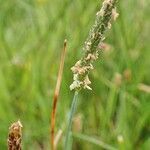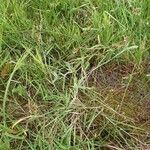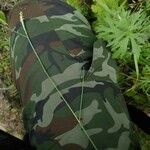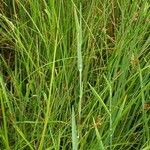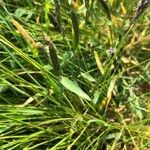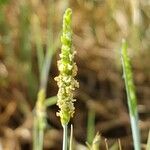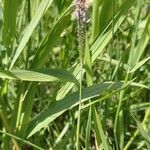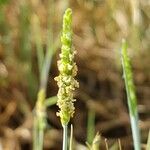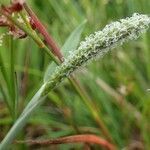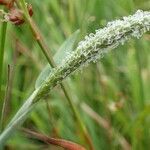Perennial or annual, caespitose. Culms erect or geniculate, often decumbent, 5–50 (–60) cm long, commonly rooting at nodes. Leaves: ligule acute to obtuse; blade 3–15 (–31) cm long, 1–7 (–8) mm wide. Panicles (1–) 2–7 (–8.5) cm long, 3–6 (–7) mm wide. Spikelets (2–) 2.2–3.5 mm long. Glumes ± equal to or slightly longer than lemma, 2–3.5 mm long, narrowly oblong to oblong-elliptic, obtuse, membranous, ± free or connate only at base, lacking keel-wing, with veins obscure but green, villous-ciliate along keel and especially towards base of lateral veins and margins. Lemma ovate, with margins free or fused to c. ½ lemma length, 2–3 (–3.5) mm long, entire or dentate, similar in firmness to glumes, 5-veined, usually glabrous; awn longer than lemma body, distinctly exserted, 3–6.5 (–7.7) mm long, attached below middle of lemma (often c. ¼ above base), weakly geniculate, with column twisted. Anthers 0.7–1.8 mm long.
Perennial; culms 2–8 dm, usually decumbent, sometimes rooting at the nodes; infl 3–5 cm × 4–6 mm, often purple-tinged; glumes as in no. 5 [Alopecurus carolinianus Walter]; awn attached halfway between the base and the middle of the lemma, geniculate, exserted 1.5–3.5 mm; anthers 1.3–2 mm; 2n=28. In mud and shallow water; a Eurasian or perhaps circumboreal sp., found throughout most of our range as an apparent introduction.
